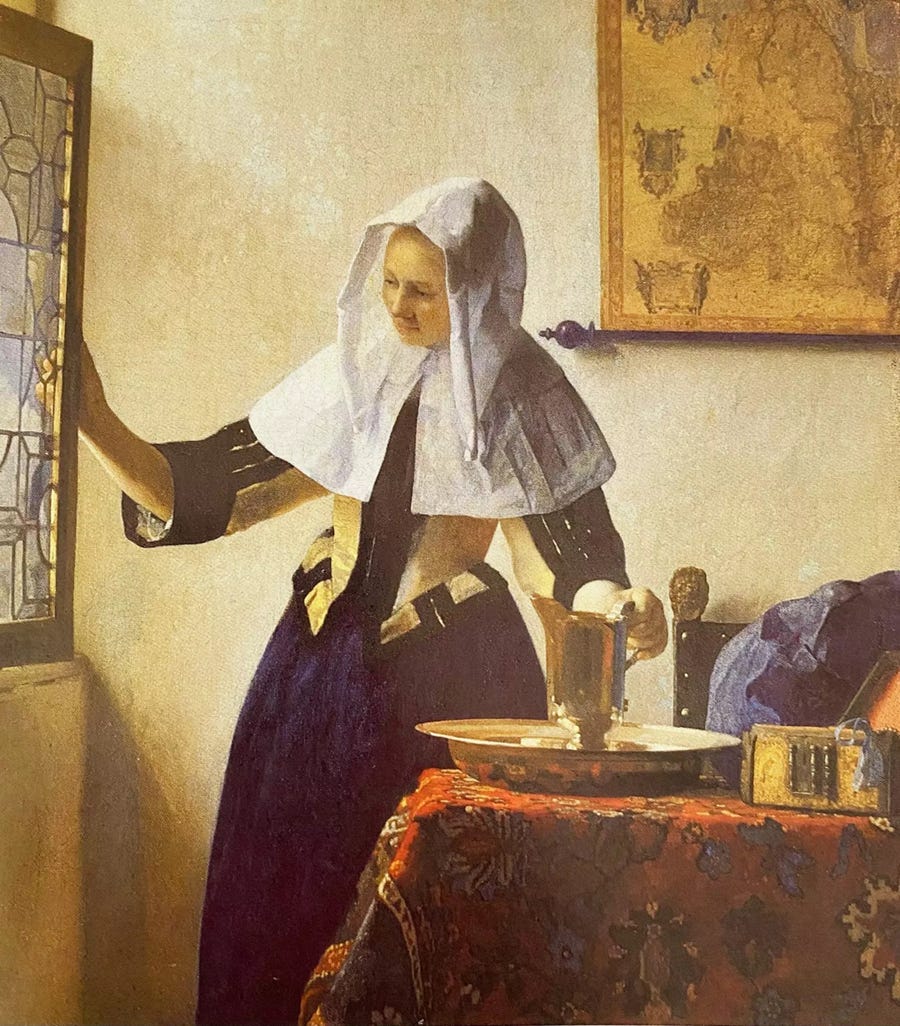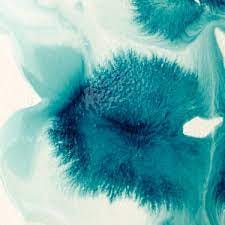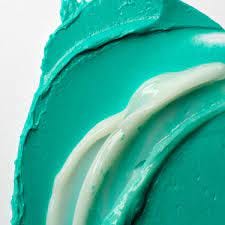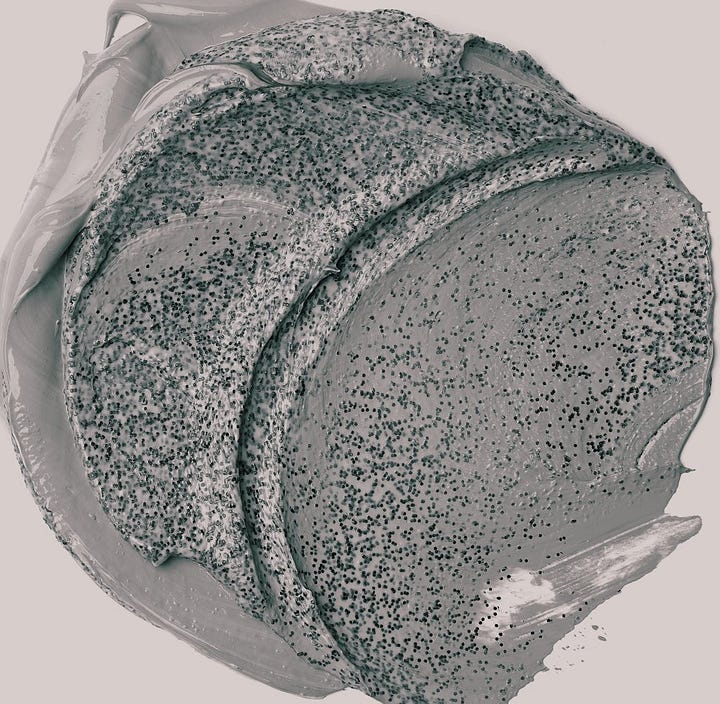Choosing the right paint can feel like standing in the cereal aisle, but with higher stakes and no sugar rush. What’s in the can matters. The wrong sheen turns scuffs into spotlights, and your perfect white might go full banana in daylight.
Still think ingredients don’t matter? Just ask this homeowner: “I used Benjamin Moore OC‑17 White Dove on walls (flat) and trim (satin), and within 3–4 weeks, most of the trim yellowed.”
On the bright side, paint has come a long way since ancient times. It is now safer, easier to use, and far less ghoulish. Now we’re just dealing with decision fatigue, not adding mercury and blood to make vermilion, or grinding up real mummies to make mummy brown. Though to its credit, one mummy could supply enough pigment to last a paint seller twenty years.
Before the late 1800s, people also had to mix paint ingredients themselves which explains why some walls looked like abstract art. That changed in 1867, when D.R. Averill of Ohio patented the first ready-mixed paint in the U.S., making painting more convenient and a whole lot more consistent.
Paint Components : A Chemistry Lesson You'll Actually Use
Every can of paint contains four key ingredients. Composition varies depending on the paint: pigment (including extenders and fillers) 20–30%, binder 20–50%, additives 0.1–5%, and solvent 25–50%. Pigments and binders are considered solids while the solvent is the liquid. Thankfully, today none of these require grave robbing.
Pigments: The Color Makers
Pigments are finely ground solids either natural or synthetic that stay suspended in the binder. They give paint its color and opacity, transforming your walls from builder’s beige to something actually livable.
Lead white was the go-to pigment for thousands of years and was used by Egyptians, Greeks, and Romans. Its production involved exposing lead to vinegar fumes and fermenting materials like horse manure, a process as smelly as it was effective.
The most common pigment in the world is titanium dioxide, discovered in 1916 and now found in everything from paint to toothpaste. It is blindingly white, so effective at scattering light that it's literally the white in white paint. This would have impressed ancient painters, who had to make do with lead white (charmingly toxic) or chalk (effective but underwhelming).



Paint is more than just color but color is where the magic starts. Iron oxides, the same ones that color Utah’s red rock formations, add earthy reds, browns, and yellows, though considerably less dramatic when applied in your living room. Carbon black deepens hues and adds richness. Phthalo blues and greens, once synthetic marvels, now appear in everything from peacock walls to moody stairwells. Ultramarine, once made from crushed lapis lazuli, was so expensive it used to be reserved for the Virgin Mary’s robe in Renaissance paintings.
Claude Monet’s San Giorgio Maggiore at Dusk (1908) showcases his late Impressionist palette, made possible by a wave of newly available synthetic pigments. Vivid hues of white, yellow, vermilion, ultramarine, and green play across the canvas, colors that earlier artists didn’t have access to in the same intensity or stability.
The materials used in historic house paints and artists’ paints were often quite similar. Both house painters and artists would grind pigments into oil or other binders by hand. Some like Picasso used commercially available house paints (such as Ripolin) for painting.
By the late 1800s, paint companies were printing colorful brochures and early paint chip cards—precursors to today’s fan decks. These samples often showcased new synthetic pigments, which made brighter and more varied colors widely available for the first time.
Aside from color, pigment usually contains extenders and fillers which are inert solids such as clay, talc, silica, or calcium carbonate added to adjust texture or opacity, increase volume or lower costs. Fillers and extenders bulk up the paint, making it go further and easier to apply, but they don’t add color, adhesion, or durability. While some of these can improve paint’s texture and flow, too many can dilute the quality, leading to weaker coverage and faster wear.
Why it matters:
The quality and type of pigment affect how your paint holds color over time. High-quality paints use stable, lightfast pigments, the kind that won’t fade after a single summer. Cheap pigments can fade or yellow, especially whites with trace iron oxides. That’s why some whites may look perfect at first but turn yellow after weeks.
Cheaper paints often bulk up with fillers, which is a bit like adding sawdust to your morning coffee: technically it increases volume, but you're not going to be happy with the results. Paints with high amounts of fillers often require more coats and can wear out faster, leading to extra time, money, and frustration down the line.
Tip:
Look for paints that prioritize quality pigments over fillers. If a paint seems suspiciously cheap, check the ingredients; more fillers usually mean lower performance. When buying white paint, look for products specifying high-quality titanium dioxide pigment and check for any yellowing complaints in reviews.
Binders (Resins): The Glue That Holds It All Together
Binders are the heroes that hold pigment particles together and ensure your paint doesn't simply slide off the wall in defeat. In water-based paints, binders are usually acrylic or vinyl acrylic. Oil-based paints use natural oils or alkyd resins, a technology that hasn’t changed dramatically since the Renaissance, when artists discovered that mixing pigments with linseed oil created durable results.
I know you are thinking what’s the big deal with glue. But the binder determines not just adhesion, but also gloss, durability, and flexibility, essentially, whether your paint job will age like good wine or like the banana you forgot in your desk drawer.
A 73,000-year-old cross-hatched design from Blombos Cave is believed to be the earliest form of paint; it is evidence of red ochre pigment mixed with animal fat as a binder.
Why it matters:
The binder affects how well your paint resists scuffs, moisture, and aging. Acrylic binders in latex paints offer flexibility and easy cleanup, while oil-based binders provide a harder finish but can yellow over time.
Tip:
If you want durable trim that resists wear, consider an oil-based or alkyd binder paint. For walls, water-based acrylic binders usually offer a good balance of durability and easy maintenance.
Liquids (Solvents): The Disappearing Act
The solvent keeps paint in a liquid state for application, then politely evaporates once its job is done, like an efficient butler. Water serves this role in latex and acrylic paints, while paint thinner or mineral spirits (essentially refined petroleum) are used in oil-based paints. This is why oil paint has that distinctive smell and why proper ventilation isn't just a suggestion.
Why it matters:
Oil-based paints have strong fumes, require ventilation and have longer drying times. Water-based paints are quick drying, not as smelly and less toxic.
Tip:
Choose water-based paints for indoor projects where low odor and fast drying matter. Oil-based paints are better suited for high-durability outdoor trim or surfaces exposed to heavy wear. Most oil-based paints today use manufactured resins (alkyds) in place of oils. Traditional oil paints (made from natural oils like linseed) are now rare outside of fine art or historic restoration.
Additives: The Supporting Cast
Additives are the smallest players in the can, but their role is huge. Without them, paint would be sticky, streaky, or moldy or all three. Modern paint additives are so sophisticated they can make paint antimicrobial, self-cleaning, or even color-changing.
The tiniest ingredient can sometimes ruin everything.
Additives are like baking soda in a cake. A pinch makes it rise and a tablespoon makes it explode. As a result paint chemists have to be like pastry chefs; precise and slightly neurotic.




Why it matters:
The right additives make paint easier to apply, longer lasting, and resistant to issues like mildew.
Tip:
Look for paints with antimicrobial additives if you’re painting in humid areas like bathrooms or kitchens. Avoid paints with cheap fillers that can cause bubbling or peeling.
Types of House Paint: The Great Divide
The paint world has come a long way since America’s first paint mill opened in Boston in 1700, when lead-based pigments were the norm. Today, the paint world essentially breaks down into two camps, like a polite civil war: the old guard of lead-based, solvent-heavy formulas, and the new generation of low-VOC, environmentally safer paints. The shift from toxic lead-based paints to safer, more environmentally friendly options in the late 20th century was driven by public health advocacy and changing regulations, transforming not just the look but the safety of American homes.
Classics: Oil-Based Paints
Durable, glossy, and slow-drying, these paints are the tortoise in the tortoise and the hare: they take their sweet time but deliver lasting results. They're ideal for trim, doors, and surfaces that need a rock-hard finish, though they require harsh chemicals for cleanup (some may consider this a small price for perfection).
Modern oil paints use alkyd resins (synthetics) which offer similar hardness and sheen but dry a bit faster and are more stable.
Oil-based paints dominated the market for centuries until environmental concerns and improved water-based alternatives began their gradual but inevitable decline. But historical use of oil for durable areas such as trim, and water-based for walls and ceilings still influences paint choices today.
Modern: Water-Based (Latex/Acrylic) Paints
Introduced in the 1940s, water-based “latex” paints revolutionized home painting as paint became fast-drying, easy to clean, and low on fumes. Early versions were considered inferior to oil, but by the late 20th century, advances in chemistry closed the gap. They now dominate interior and exterior applications, offering excellent durability while being considerably more environmentally friendly. Low-VOC versions also appeared in the 2000s which wasn’t just green marketing; it was partly driven by the 1990 Clean Air Act amendments.
Finishes: The Right Amount of Shine
Paint finishes range from aggressively matte to mirror-like, each with its own personality and appropriate use case.
Typical Finishes:
Flat and Matte: These finishes hide imperfections like a diplomatic makeup artist, but they're about as washable as a paper towel. Perfect for ceilings and low-traffic areas where you're unlikely to leave fingerprints or contemplate scrubbing.
Eggshell and Satin: The diplomatic middle ground, offering enough sheen to be cleanable without being obviously shiny. Eggshell gets its name from its resemblance to actual eggshells which is both accurate and slightly unsettling.
Semi-Gloss and High-Gloss: Durable and easy to clean, but they'll highlight every imperfection like a bad face foundation. These finishes are ideal for trim, doors, and anywhere you expect moisture or heavy use basically, anywhere your home gets actually lived in.
Sheen does more than influence appearance.
It affects how tough and scrubbable the surface will be. As a rule of thumb, the shinier the finish, the more durable it tends to be. But here’s the catch: sheen levels aren’t standardized. One brand’s “satin” might look glossier than another’s “semi-gloss.”
Glossy paints are ideal for kitchens, bathrooms, and high-traffic areas. In fact, during the 1920s and 30s, manufacturers marketed these paints as “sanitary enamels,” pitching them as the health-conscious choice for modern homes. The gloss wasn’t just aesthetic, it was seen as a defense against grime and germs.Sheen changes how we perceive color. A crisp white in flat paint can feel soft and powdery, while the same white in a glossy enamel might come off as sharp and luminous.
Interior vs. Exterior: Different Jobs Require Different Ingredients
Interior Paint: Formulated for easy cleaning, low odor, and optimal color retention under artificial lighting. Interior paints don't need to weather storms (literal ones, anyway).
Exterior Paint: Exterior paint is designed to withstand UV radiation, temperature swings, and weather These paints cost more because they're essentially protecting your home's largest and most exposed surfaces, a bargain compared to watching the exterior deteriorate.
The main difference between interior and exterior paints lies in their formulation:
Pigments:
Exterior paints include UV-resistant pigments that hold color longer under sunlight. Interior pigments focus on color richness under artificial light.
Binders:
Exterior paints use stronger, more flexible binders that can stretch and contract with temperature swings and resist moisture intrusion. Interior paints use binders optimized for smooth application, easy cleaning, and low odor but won’t withstand weather.
Additives:
Exterior formulations have mildewcides, UV blockers, and surfactants to prevent fading, cracking, and mildew growth. Interior paints focus on low VOCs, low odor, and easier cleanup additives.
George Washington’s Mount Vernon isn’t actually made of stone. The mansion’s wood siding was painted and sanded to mimic expensive masonry, a clever illusion of ingenuity and aspiration. The magic is from what was in the paint: coarse sand mixed into the top coat and a binder that could hold it, pigments matched to stone, and just enough solvent to spread it thin and even. Every paint job is chemistry in disguise with ingredients working together to create a finish.
Tips for Avoiding Regret and Achieving Glory
Quality Matters: Higher-quality paints use better pigments and binders, resulting in superior coverage, durability, and color retention. Cheap paint is like cheap shoes; it seems like a good idea until you're living with the consequences.
Match the Paint to the Surface: Using interior paint outside is like wearing a business suit to go swimming; technically possible, but inadvisable and ends poorly.
Test Your Colors: Paint colors can be surprisingly deceptive under different lighting conditions. What looks like taupe in the store might look like mud in your north-facing dining room. Always try samples on your walls and watch how they change through the day and with the weather.
In 1982, Benjamin Moore introduced the first computer-based color matching system, Prior to this if you wanted to match a paint color say, from a fabric swatch or an old wall you'd bring it to a paint store. The employees would use visual judgment and color charts to guess the closest match. This was highly subjective and often inaccurate, especially under different lighting.
Don't Skip Primer: Primer helps paint stick properly and ensures colors come out true and even.
Choosing the right paint isn’t just about finding the right color swatch; it’s about picking a formula that will stand up, show up, and grow old gracefully.
Paint deserves patience. The phrase "watching paint dry" has been around since at least the 1950s, but in the 19th century, people sometimes gathered to watch the lime wash dry on new buildings or varnish on fine art, making paint-watching a surprisingly social activity.





















Oh we know all about this. We used Benjamin Moore's 'Simply White' (OC-117) and our painter had a terrible time with it. They had literally just changed the recipe and it required far more coats than had been estimated – and this was on new walls that had been primed. It was like they'd watered it down considerably. Benjamin Moore really let us down there. Paint is an absolute minefield!